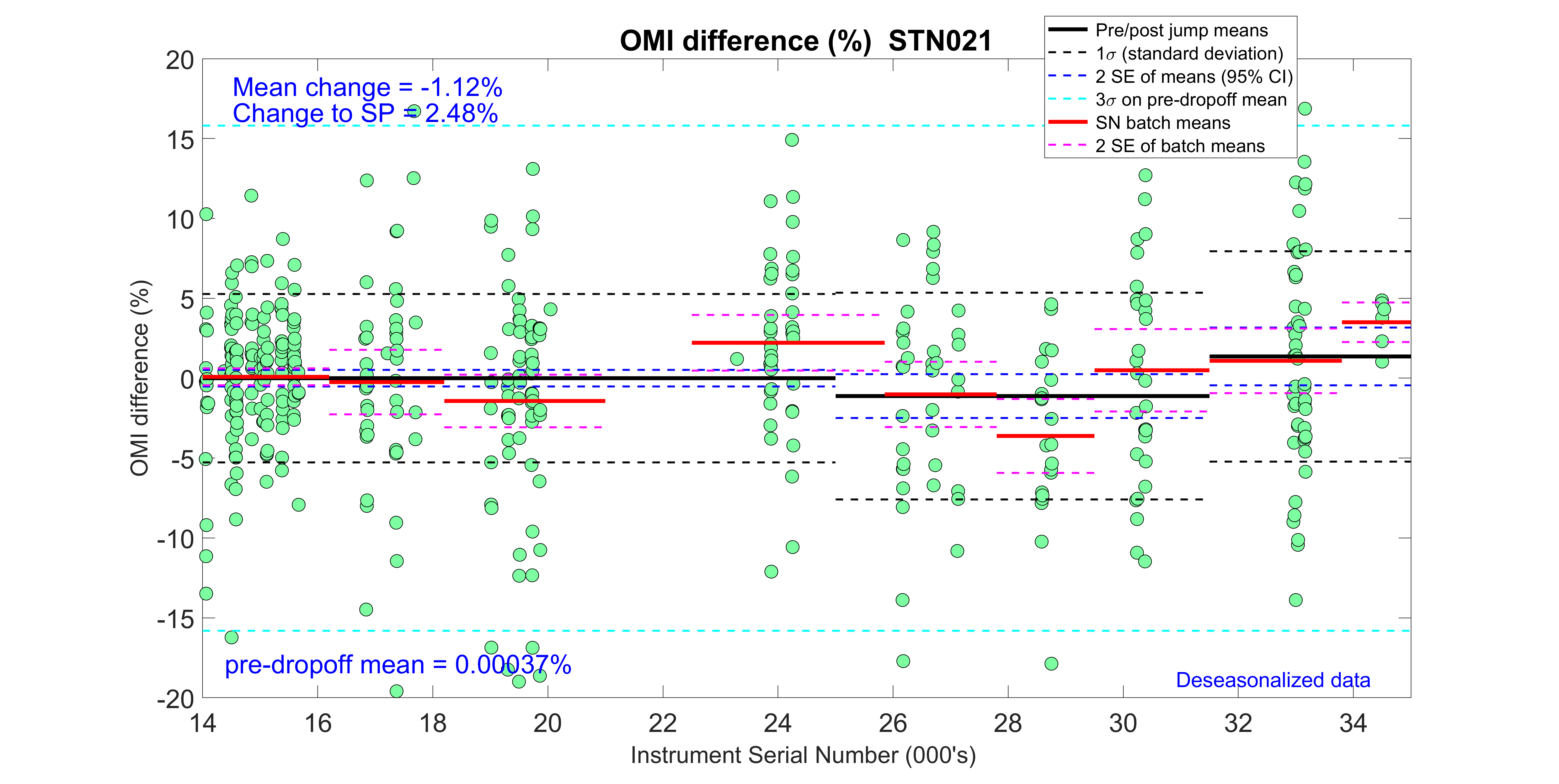Improving Data Quality in Long-term Canadian Ozone Sounding Records
D.W. Tarasick1, R.M. Stauffer2, H.G.J. Smit3, A.M. Thompson2, J. Davies, R. Van Malderen4, B.J. Johnson5, H. Vömel6 and D.E. Kollonige2,7
1Environment and Climate Change Canada (ECCC), Toronto, Ontario, Canada; 437-580-3243, E-mail: david.tarasick@ec.gc.ca
2NASA Goddard Space Flight Center (GSFC), Atmospheric Chemistry and Dynamics Laboratory, Greenbelt, MD 20771
3Institute for Energy and Climate Research, Troposphere IEK-8, Research Center Juelich, Juelich, Germany
4Royal Meteorological Institute of Belgium, Brussels, Belgium
5NOAA Global Monitoring Laboratory (GML), Boulder, CO 80305
6National Center for Atmospheric Research (NCAR), Boulder, CO 80307
7Science Systems and Applications, Inc. (SSAI), Lanham, MD 20706
An abrupt change in ozone bias relative to several satellite sensors --a total column ozone (TCO) “dropoff” of about 2-3% –has been reported at number of ozonesonde stations (Stauffer et al., 2020), including Canadian stations. The dropoff affects stratospheric measurements from the EnSci ozonesonde, after about 2013 (approximately serial number 25000). Corrections and additional data have reduced the estimated dropoff at most Canadian sites (Stauffer et al., 2022). The Canadian network recently switched to Science Pump sondes (after serial number 32000), and this has reversed the dropoff, and approximately restored agreement with satellite sensors.
It is not standard practice to calibrate individual ozonesonde pumps before launch, as this is difficult and labour-intensive; rather an average pump calibration is used in data processing. Recently, an analysis of an extensive record of individual EnSci pump calibrations made since 2009 (Nakano and Morofuji, 2023) has shown a small negative shift, after serial number 25000, in the low-pressure pump correction. This systematic shift agrees well with the average differences found with MLS for Canadian EnSci data between 100 hPa and 10 hPa, both in magnitude and in variation with altitude.
The use of these new pump corrections with Canadian data is explored, and results are compared to MLS, and other satellite sensors. The correction for the change in pump efficiency reduces or removes the dropoff in the time series of satellite comparisons; when serial number 25000 is chosen as a breakpoint, the step changes over 7 stations and four satellite sensors (GOME2a, GOME2b, OMI, OMPS) vary between +2.4% and -3.1%, with an average of -0.6%. In contrast, the average change with the recent switch to Science Pump sondes is +1.9% (based on a limited number of flights).
Figure 1. Comparison of sonde integrated ozone and OMI overpass data at Edmonton, 2010-2022.

